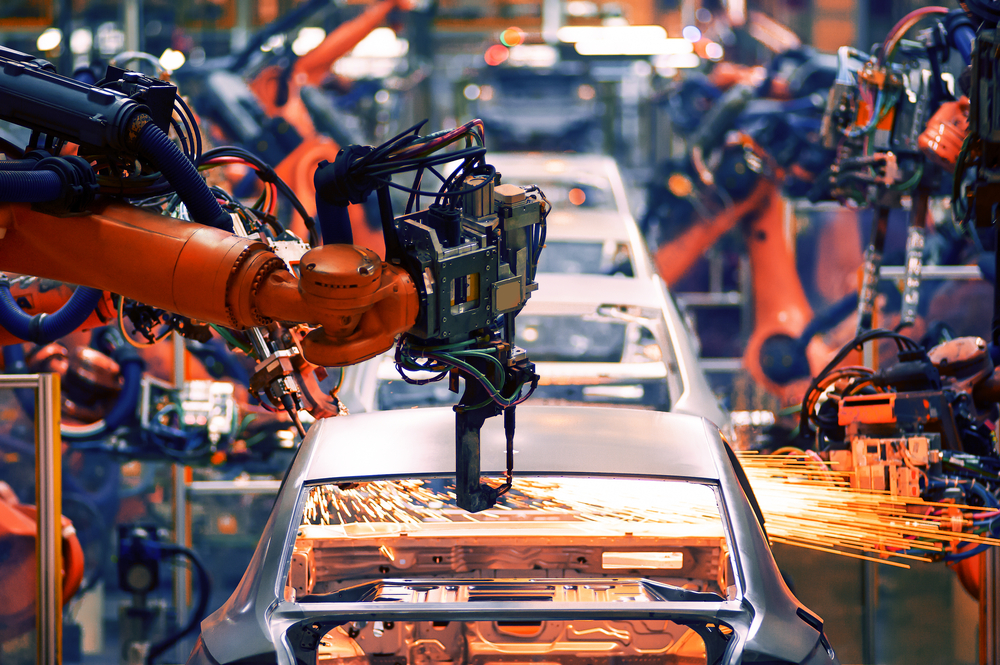The Occupational Safety and Health Administration (OSHA) and National Institute for Occupational Safety and Health recently updated the OSHA Technical Manual’s chapter on “Industrial Robot Systems and Industrial Robot System Safety.”
The updated and expanded chapter on robotics now includes up-to-date technical information on hazards associated with industrial and emergent robot applications, safety considerations for employers and workers, and risk assessments and risk reduction measures. OSHA and NIOSH collaborated on the updates through an alliance with the Association for Advancing Automation (or “A3,” formerly the Robotic Industries Association).
The alliance was formed to improve awareness about workplace hazards and effective safeguards, identify research needs on the use of traditional industrial and emerging collaborative robotic technologies, and share technical knowledge.
“Robot use will continue to expand, and employers have a responsibility to assess the hazards these new applications may introduce and implement appropriate safety controls to protect the workers who operate and service them,” Assistant Secretary of Labor for Occupational Safety and Health Doug Parker said in an agency statement.
“We value the efforts and expertise of the engineers at the Association for Advancing Automation and the researchers at NIOSH to enhance this important resource,” Parker continued.
OSHA compliance safety and health officers (CSHOs) use the manual’s robotics chapter as they perform inspections at facilities with robotic systems. The manual also provides a technical resource for safety and health professionals overseeing the use of robotic systems in workplaces.
There currently are more than 310,000 industrial robots now operating in U.S. factories, according to estimates in the World Robotics 2021 Industrial Robots report. Hazards for workers working with robotic systems include struck-by/caught-between, crushing and trapping, electrical, hydraulic, pneumatic, and environmental hazards.
While robotic technologies can perform dangerous or repetitive tasks, and advances in robotics can add new capabilities to work and the workplace, they also introduce new workplace hazards for those who work with and alongside such systems. Robotic systems also are becoming more collaborative and mobile in nature.
Robotics safety does not utilize the traditional industrial hygiene “hierarchy of controls” (elimination, substitution, engineering controls, administrative controls, and personal protective equipment (PPE)). Safety in robotics systems instead follows a three-step process—designer impact, integrator impact, and user impact—in which machine manufacturers and application integrators have primary responsibilities for ensuring system safeguards.
However, employers, system operators, and maintenance workers must have a good working knowledge of robot systems and application safety standards. They also must have specific knowledge and understanding of regulations and standards that apply to their specific equipment and robotic applications.
The industry consensus safety standard for robot systems and applications is Part-2 of ANSI/RIA R15.06-2012 (Industrial Robots and Robot Systems—Safety Requirements).
In addition to covering the components of, structure of, and application for robotic systems, the updated chapter of the OSHA technical manual covers hazards and safety considerations of robotic systems; risk assessments; risk reduction measures; and a list of applicable OSHA, international, and industry consensus standards.
“This updated resource developed with the combined expertise of NIOSH, OSHA and A3, addresses a critical need for the most current information for health and safety professionals about working safely with robots in various workplaces—both those that have traditionally used robotic systems and those introducing new robotic applications,” NIOSH Director John Howard, MD, said in a statement.

